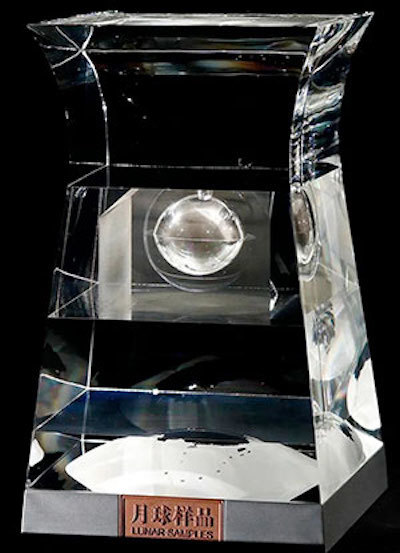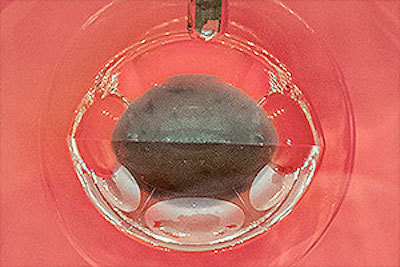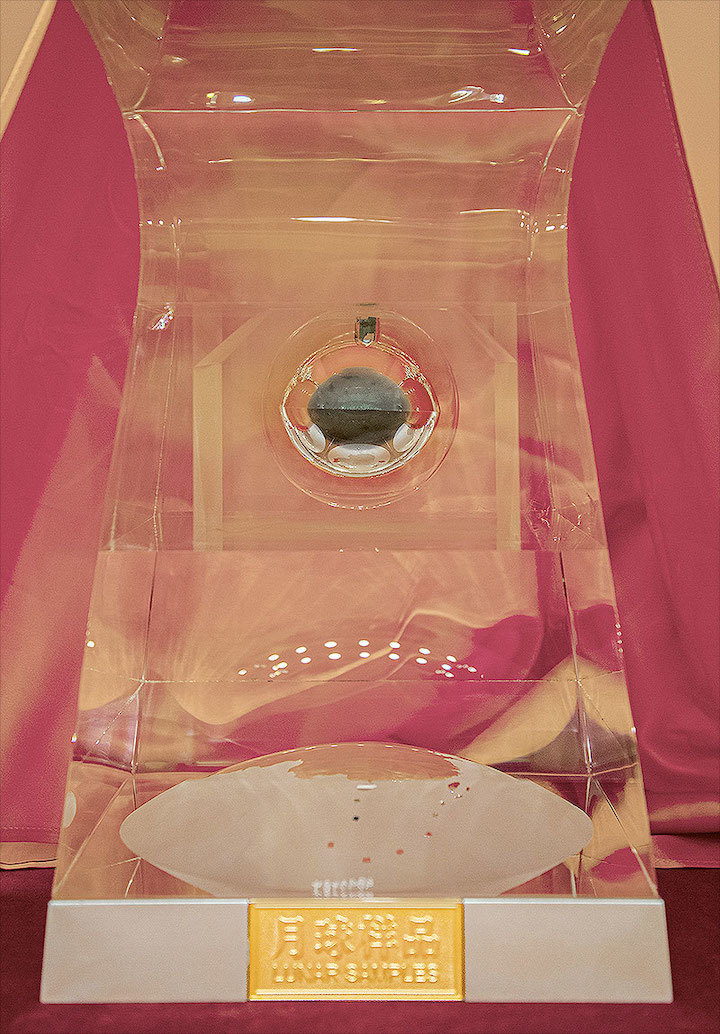26.02.2021

The National Museum of China in Beijing will be the first to exhibit lunar soil returned by the Chang'e 5 mission in March. The regolith has been encased in a crystal display. (National Museum of China)
Some of the first samples of the moon to be brought back to Earth in more than 40 years are set to go on public display in Beijing.
A small portion of the lunar regolith, or soil, collected by China's recent Chang'e 5 robotic mission will open on exhibit at the National Museum of China in March, the institution announced on Tuesday (Feb. 22). The news followed China's President Xi Jinping viewing the samples for himself and reviewing the country's lunar exploration program with mission scientists and engineers at the Great Hall of the People in Beijing on Monday.
Xi said that the success of the Chang'e 5 mission, which returned about 3.8 pounds (1,731 grams) of lunar regolith in December, marked the conclusion of a three-step lunar exploration program that consisted of orbiting, landing on the moon and bringing back samples.
"It is another significant achievement in overcoming difficulties by employing the advantages of the new system of pooling national resources and strengths," said Xi, according to the Xinhua state-run news agency. "It is a vital milestone in the development of China's space endeavor."
The Chang'e 5 soil sample going on exhibit at the National Museum of China is encased in a crystal container resembling a ritual Chinese wine vessel or "zun." The display stands 38.44 centimeters tall, a nod to the 384,400 kilometers that is the average distance between Earth and the moon, and 22.89 cm wide for the 22.89 days that the mission lasted (15 by 9 inches).
The lunar dust inside the crystal is held within a hollow sphere representing both the moon and the Chang'e 5 re-entry capsule that delivered the sample to a safe touchdown in the Australian outback on Dec. 16, 2020. The sphere floats above a frosted dome symbolizing Earth that has a clear inset in the shape of China.
A majority of the Chang'e 5 lunar material is being held at the Chinese Academy of Sciences' National Astronomical Observatory for scientific study. In January, the China National Space Administration (CNSA) released its conditions for samples to be loaned out for research to domestic and international institutions.
The same regulations allow for the exchange, exhibition and goodwill gift of lunar samples as decided by CNSA's Lunar Exploration and Space Engineering Center (LESEC).
Chang'e 5 was the first mission to return lunar material to Earth since the former Soviet Union's Luna 24 robotic mission in August 1976. It was the 21st mission to safely touch down on the moon and the tenth to return lunar samples to Earth.
In addition to its own recently acquired sample of lunar soil going on display, China also has on exhibit a small piece of a moon rock collected by NASA's Apollo 17 astronauts in December 1972. The goodwill gift presented on behalf of the United States to the people of China is on display at the Beijing Planetarium.

The Chang'e 5 lunar soil going on display at the National Museum of China is held within a sphere representing the moon. (Xinhua)

Xinhua
Quelle: CS
